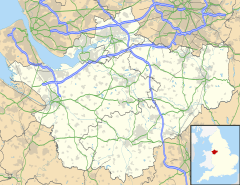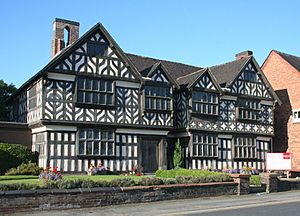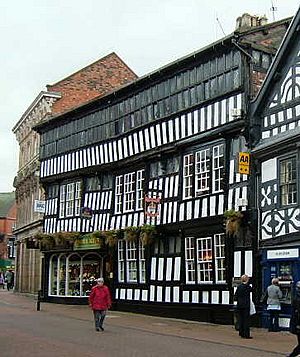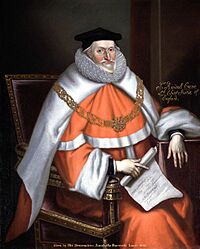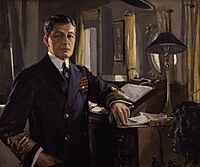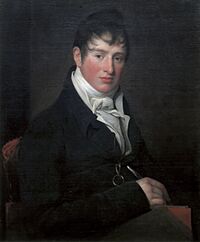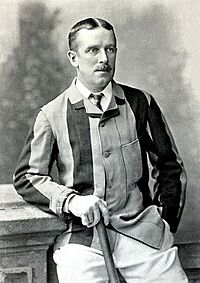Nantwich facts for kids
Quick facts for kids Nantwich |
|
|---|---|
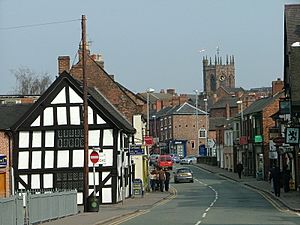 Welsh Row, Nantwich, with the tower of St Mary's Church and shops |
|
| Population | 14,045 (2021 Census) |
| OS grid reference | SJ652523 |
| Civil parish |
|
| Unitary authority |
|
| Ceremonial county | |
| Region | |
| Country | England |
| Sovereign state | United Kingdom |
| Post town | NANTWICH |
| Postcode district | CW5 |
| Dialling code | 01270 |
| Police | Cheshire |
| Fire | Cheshire |
| Ambulance | North West |
| EU Parliament | North West England |
| UK Parliament |
|
Nantwich is a historic market town in Cheshire, England. It's known for having many old buildings, especially from the Tudor and Georgian periods. In 2021, about 14,045 people lived there.
Contents
A Look Back at Nantwich's History
Nantwich has a long history, going all the way back to Roman times.
Early Days and Salt Production
The Romans used salt from Nantwich to preserve food and as a seasoning for their soldiers in places like Chester. Salt was also important for making Cheshire cheese and for tanning leather. The name "Nant" comes from a Welsh word for "brook" or "stream." "Wich" or "wych" means a place with brine (salty water) springs or wells. This shows how important salt was to the town.
In the Domesday Book, a survey from 1086, Nantwich had eight salt houses. It also had a castle and was a main town in its area. The Normans burned the town down after they conquered England, leaving only one building standing.
Medieval Nantwich
Nantwich was a major salt-producing center from at least the 10th century. The Norman castle was built near the River Weaver before 1180. During the Middle Ages, Nantwich was the most important salt town and the second most important settlement in Cheshire after Chester. By the 14th century, the town had a weekly cattle market and was also important for its leather tanning industry.
The Great Fire of 1583
In December 1583, a huge fire destroyed most of the town east of the River Weaver. Queen Elizabeth I even helped pay for the town to be rebuilt. The town was quickly rebuilt, following its original layout. A street was renamed Beam Street because timber (wood) for rebuilding was brought along it.
The English Civil War
During the English Civil War, Nantwich supported Parliament. Because of this, the town was attacked several times by the Royalist army. The last siege lasted six weeks. It ended when Parliament's forces won the Battle of Nantwich on January 26, 1644. This battle is re-enacted every year on "Holly Holy Day" by a group called the Sealed Knot. The name comes from the holly sprigs people wore to remember the battle.
Changes Over Time
The salt industry was at its peak in the mid-1500s but almost disappeared by the late 1700s. The last salt house closed in the mid-1800s. Some people believe this decline helped save the town's old buildings. The last tannery closed in 1974. Nantwich was also a stop for travelers on the road from London to Chester. However, this trade slowed down when new, faster roads and railways bypassed the town.
Nantwich Mill
A watermill existed south of Nantwich Bridge as early as 1228. It was likely rebuilt after the Great Fire of 1583. Originally, it was a mill for grinding corn. From 1789 to 1874, it became a cotton mill called Bott's Mill, but then it went back to being a corn mill. A turbine was installed around 1890 to replace the old water wheel. The mill was taken down in the 1970s after a fire. Today, the area is a riverside park.
Brine Baths
Nantwich's salty springs were used for spa treatments. The Snow Hill swimming pool, opened in 1883, still uses the open-air brine pool today. There was also the Brine Baths Hotel, which opened in 1893. It was known for having "the strongest saline baths in the world." These baths were used to treat conditions like gout and rheumatism.
The hotel had gardens, tennis courts, a golf course, and a bowling green. The bowling green is still used today by the Nantwich Park Road Bowling Club. The hotel was used as a hospital during World War I and an army base during World War II. It closed as a hotel in 1947 and was later demolished in 1959. The land where the hotel stood is now used for houses and schools.
How Nantwich is Governed
Nantwich is part of the unitary authority of Cheshire East. It has its own Town Council, which looks after the local area. Before 2009, Nantwich was part of the larger Borough Council of Crewe and Nantwich. The Town Council now handles many of the local duties.
Since 1983, Nantwich has been part of the Crewe and Nantwich area for choosing Members of Parliament.
Interesting Places to Visit
Nantwich has one of the largest collections of historic buildings in Cheshire, second only to Chester. Most of these old buildings are in the town center and along Welsh Row.
The oldest building is the 14th-century St Mary's Church, which is a very important historic site. Two other buildings, Sweetbriar Hall and Churche's Mansion, are even older than the 1583 fire. They are beautiful timber-framed houses. After the fire, Nantwich was described as the "best built town in the county." Other great timber-framed buildings include 46 High Street and the Crown Hotel, which was once a coaching inn. Many old buildings have their original timber frames hidden behind brick.
Nantwich also has many elegant Georgian town houses. Some examples are Dysart Buildings and Townwell House. Even some Victorian buildings are listed as historic. One of the newest listed buildings is 1–5 Pillory Street, built in 1911 in a French style. Most of the town's listed buildings were originally homes, but some were churches, pubs, schools, or banks.
Dorfold Hall is a grand Jacobean mansion in the nearby village of Acton. It's considered one of the finest Jacobean houses in Cheshire. The Nantwich Show, including the International Cheese Awards until 2019, used to be held in its grounds.
The Nantwich Museum, on Pillory Street, tells the story of the town. You can learn about Roman salt-making, the Great Fire, the Civil War Battle of Nantwich, and local industries like shoemaking and cheese-making. The Nantwich Players Theatre, also on Pillory Street, puts on plays.
The Nantwich Millennium Clock is an interesting art piece in Cocoa Yard. It's a free-standing mechanical clock inside a glass case, made to celebrate the new millennium.
Nantwich's Geography

Nantwich is located on the flat Cheshire Plain, right next to the River Weaver. The Shropshire Union Canal runs to the west of the town. It joins the Llangollen Canal to the north. The town is about four miles southwest of Crewe and twenty miles southeast of Chester. Major roads like the A51 and A500 connect to the town's bypass.
Getting Around: Public Transport
Nantwich railway station is on the train line that connects Crewe to Shrewsbury and other towns. Buses also run from Nantwich Bus Station, connecting the town to nearby areas.
Learning in Nantwich: Education
Nantwich has eight primary schools and two secondary schools: Brine Leas School and Malbank School and Sixth Form College. Reaseheath College offers further education and higher education courses. A sixth-form college at Brine Leas opened in 2010.
Malbank School and Sixth Form College was chosen to represent the North West region for the London 2012 Olympic Games.
Sports and Recreation
The town's football team, Nantwich Town, plays at the Weaver Stadium. They won the FA Vase in 2006.
Rugby union is played by two clubs: Crewe and Nantwich RUFC and Acton Nomads RFC. Crewe & Nantwich Steamers play rugby league.
The Nantwich Cricket Club has won the Cheshire County Premier League title several times. In 2019, they reached the final of the ECB National Club Cricket Championship at Lord's.
Local Media
Nantwich is covered by several newspapers, including The Sentinel, the Nantwich Chronicle, and the Crewe and Nantwich Guardian. Local TV news comes from BBC North West and ITV Granada.
There are also several radio stations for the Nantwich area, like BBC Radio Stoke and The Cat 107.9. The Nantwich News is an online blog that shares local events and news.
Fun Events in Nantwich
Cheese Awards
Until 2019, the yearly International Cheese Awards were held in July during the Nantwich Show. These awards have now moved to a different location.
Jazz and Blues Festival
Since 1996, Nantwich has hosted an annual Jazz and Blues Festival during the Easter Bank Holiday weekend. Musicians from all over the country perform in pubs and venues around the town.
Food Festival
The yearly Nantwich Food Festival takes place in the town center on the first weekend of September. It's a free event that started again in 2010. It brings together many local food producers and offers cooking demonstrations, family activities, and entertainment. About 30,000 visitors come to the festival each year.
Famous People from Nantwich
Public Service
- Sir Nicholas Colfox (around 1400) was a knight involved in the murder of King Richard II's uncle.
- Blessed Thomas Holford (1541–1588) was a teacher and priest who was martyred.
- Sir Roger Wilbraham (1553 in Nantwich – 1616) was an important lawyer for Queen Elizabeth I.
- Sir William Brereton, 1st Baronet (1604–1661) made Nantwich his headquarters during the English Civil War.
- Matthew Henry (1662–1714) was a famous minister who died in Nantwich.
- Thomas Egerton Hale (1832 in Nantwich – 1909) received the Victoria Cross for bravery.
- David Beatty, 1st Earl Beatty (1871 in Stapeley – 1936) was a very high-ranking admiral in the Royal Navy.
- Sir Sir Andrew Witty (born 1964), a top business leader, went to Malbank School in Nantwich.
Science
- John Gerard (1545 in Nantwich – 1612) was a famous botanist who wrote a book about plants.
- Joseph Priestley (1733–1804), who helped discover oxygen, lived and taught in Nantwich.
- Sir William Bowman (1816 in Nantwich – 1892) was a surgeon and eye doctor.
- Sir Kenneth Mather (1911 in Nantwich – 1990) was a British geneticist and botanist.
Arts
- Isabella Whitney (born 1545) was one of England's first female poets.
- Peter Bayley (1779 in Nantwich – 1823) was a writer and poet.
- James Hall (1846–1914) lived in Nantwich for 40 years and wrote its history.
- Kim Woodburn (born 1942), a television personality, lives in Nantwich.
- Ben Miller (born 1966), a famous actor and comedian, grew up in Nantwich.
- Thea Gilmore (born 1979), a singer/songwriter, lives in Nantwich.
- Alex "A. J." Pritchard (born 1994), a ballroom dancer from Strictly Come Dancing, went to school in Nantwich.
- Blitz Kids (active 2006–2015) was an alternative rock band from Nantwich and Crewe.
Sport
- A. N. Hornby (1847–1925) was the first person to captain England in both cricket and rugby.
- Harry Stafford (1869–1940) was a footballer who played many professional games.
- Dario Gradi (born 1941), a well-known football manager for Crewe Alexandra, lives in Willaston.
- Ashley Westwood (born 1990 in Nantwich) is a footballer who has played for several top clubs.
See also
 In Spanish: Nantwich para niños
In Spanish: Nantwich para niños


